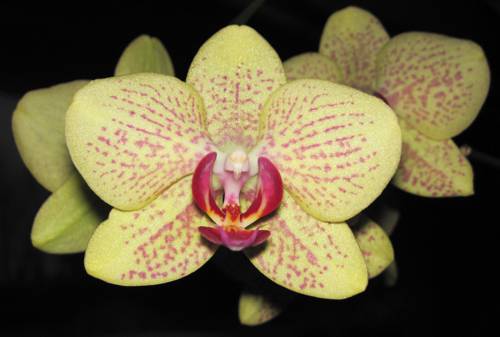
FAQ About Indoor Plant Orchid Hybridization

What is orchid hybridization?
Orchid hybridization is the process of cross-breeding different species or varieties of orchids to create new hybrids. This involves carefully selecting and pollinating parent plants to produce offspring with desirable traits such as unique colors, shapes, or growth habits.

Why hybridize orchids?
Hybridizing orchids allows growers to create new and unique orchid varieties with desirable characteristics that are not found in natural species. These can include improved color patterns, resilience to environmental conditions, exotic flower shapes, or enhanced fragrance.

What are the basic steps involved in orchid hybridization?
The basic steps in orchid hybridization include selecting two parent orchids with desired traits, manually pollinating the flowers by transferring pollen from one flower to the other, and then waiting for the seed pods to develop. Once mature, the seeds can be sown to grow new hybrid plants.

What equipment is needed for orchid hybridization?
The basic equipment needed for orchid hybridization includes a sterilized pollination tool (like a toothpick or small brush), labels for recording crosses, and growing medium for sowing seeds. It is also helpful to have a magnifying glass for precision and a clean workspace.

How important is the selection of parent plants in orchid hybridization?
Selection of parent plants is crucial in orchid hybridization since the traits of the hybrid depend largely on the characteristics of the parents. Careful selection can enhance desired traits such as blooming size, flower color, pattern, and plant resilience.

How long does it take to see results from orchid hybridization?
Orchid hybridization is a slow process. After successful pollination, it can take anywhere from 9 to 18 months for the seed pod to mature. After sowing, seedlings can take 3 to 5 years before they bloom, revealing the characteristics of the new hybrid.

What are some challenges faced in orchid hybridization?
Challenges in orchid hybridization include ensuring successful pollination, preventing contamination during seed sowing, and the long time frame for seed maturation and growth. Additionally, predicting the exact traits of hybrids can be uncertain, and not all hybrids are successful or desirable.

Can you hybridize any type of orchid?
Not all orchids can be hybridized with each other, as compatibility depends on the species' genetic makeup. However, many orchids within the same genus can be successfully cross-bred. Consultation with orchid taxonomy and hybridization records can guide compatibility.

What is the difference between natural and artificial orchid hybridization?
Natural orchid hybridization occurs in the wild without human intervention, often through insects as pollinators. Artificial hybridization involves human intervention to deliberately cross-breed selected parent plants to achieve specific desired traits.

What are some popular orchid hybrids?
Popular orchid hybrids include the Cattlianthe, which is a cross between Cattleya and Guarianthe, and the Phalaenopsis hybrids, which are well-loved for their colorful and long-lasting blooms. These hybrids have become popular due to their beauty and resilience.

How do environmental conditions affect orchid hybridization?
Environmental conditions like temperature, humidity, and light can influence both the success of pollination and the growth of hybrid seedlings. Ensuring optimal conditions can thus improve the chances of successful orchid hybridization and development of healthy hybrids.

Can hybrid orchids be patented?
Yes, hybrid orchids can be patented. Intellectual property laws allow for the protection of new plant varieties, ensuring that creators of hybrid orchids can have exclusive rights to their commercial production and sale. Applying for a plant patent involves submitting a detailed description of the new hybrid.

What role does tissue culture play in orchid hybridization?
Tissue culture is a method used to propagate large numbers of orchid hybrids quickly and uniformly. It involves growing orchids from small tissue samples in sterile, nutrient-rich conditions. This technique is widely used for preserving desirable traits in hybrid orchids on a large scale.

Are hybrid orchids genetically modified?
Hybrid orchids are not genetically modified in the sense of direct DNA manipulation. They result from traditional cross-breeding and genetic recombination, which occurs naturally in the breeding process. No genetic engineering is involved in typical hybridization practices.

How can you tell if an orchid is a hybrid?
Identifying a hybrid orchid involves recognizing characteristics that do not fit within a single species; hybrids often display mixed features from their parent species. Additionally, hybrids are often labeled and named by the breeder, making identification easier.

What is 'backcrossing' in orchid hybridization?
Backcrossing in orchid hybridization refers to the process of crossing a hybrid plant back with one of its parent plants. This technique can be used to enhance specific traits associated with one of the parents in subsequent generations.

Is there a difference in care for hybrid orchids compared to species orchids?
Hybrid orchids often have similar care requirements to species orchids, but they may exhibit improved resilience or adaptability. However, it is important to understand the specific needs of each hybrid, as traits can vary widely depending on parentage.

What are mericlones in relation to hybrid orchids?
Mericlones are orchids that have been produced through tissue culture from a single plant or hybrid, resulting in genetically identical plants. This method ensures a uniform population of orchids with consistent traits, especially valuable for hybrids with desirable characteristics.

Can orchid hybrids naturally pollinate and reproduce?
Some orchid hybrids can produce viable seeds and naturally pollinate, but fertility can vary. Many hybrids are sterile or produce weak seeds. As a result, controlled artificial pollination is often relied upon for producing new generations of hybrid orchids.

What is the role of color in orchid hybridization goals?
Color plays a significant role in orchid hybridization goals, as unique and vibrant colors can be highly sought after. By cross-breeding different colored orchids, hybridizers aim to create new shades or patterns that appeal to collectors and enthusiasts.
